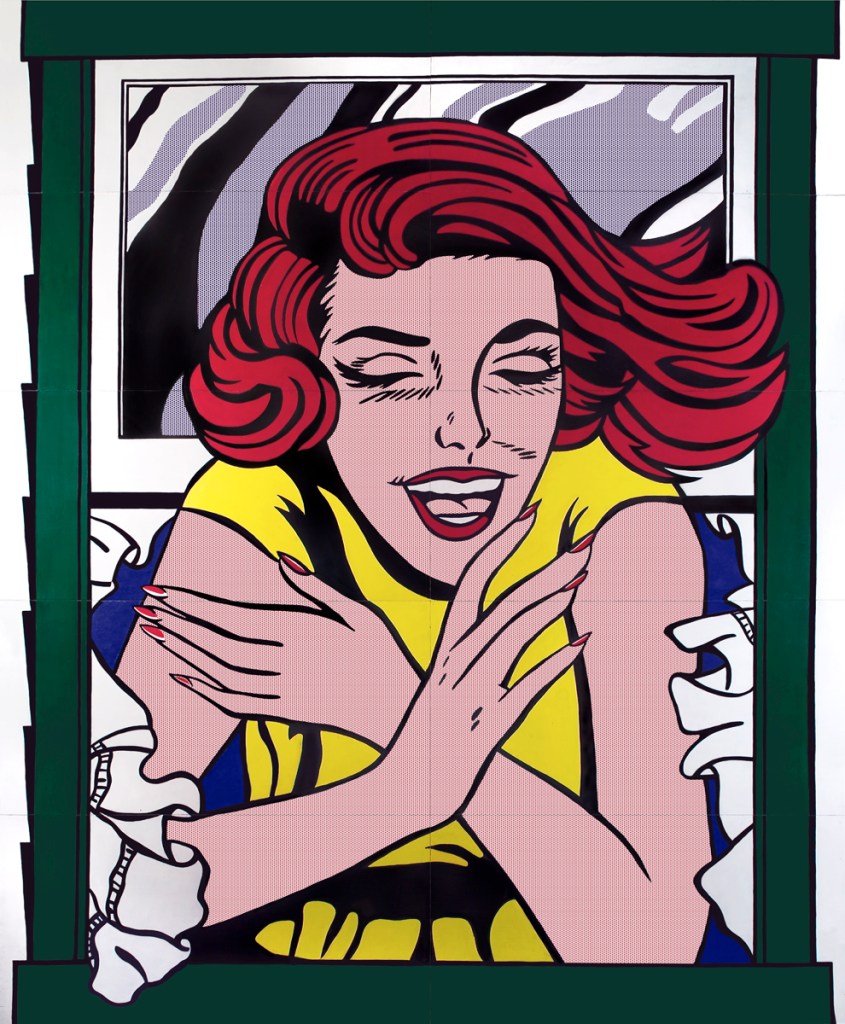
World’s Fair Mural, 1964
Oil on plywood, 240 x 192 inches
1968.7
ABOUT THE ART
The woman leaning out of the window in this painting looks as if she’s been taken from a frame of a giant comic strip. The solid blocks of primary colors, the bold black outline, and the small “Ben-Day” dots for shading are all elements of mass-produced comics. In his art, Roy Lichtenstein exaggerates everything: the Ben-Day dots are a thousand times larger than in real comics, the colors are brighter, the lines stronger, and the arrangement of forms more energetic. Not only does the artist draw our attention to the formal elements of visual artwork (color, pattern, line, form), but he makes us think about the relationships between art and popular culture. In this mural, he shows us how comics can express strong emotions (pleasure and delight) through a simple, controlled composition.
ABOUT THE ARTIST
In the late 1950s and 1960s, Roy Lichtenstein was one of the artists who initiated the Pop Art movement by exploring the connections between popular culture and fine art. Born in New York City in 1923, Lichtenstein began his career using popular sources for his subject matter and creating semi-abstract painting with themes such as Americana and the Old West. By the 1960s he turned to the effects of mass media, taking subjects from popular culture, mass media, and everyday life. He painted in a way that mimicked commercial printing techniques and comic strips, depicting everyday objects and scenes. By reproducing and altering commercial advertisements, comic strips, and product packaging, Lichtenstein challenged the proliferation of mass-media images while also questioning the definition of “fine art.”